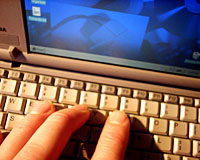 An unemployed Scottish man alleged to have carried out “the biggest military computer hack of all time” will appear in a London court today.
An unemployed Scottish man alleged to have carried out “the biggest military computer hack of all time” will appear in a London court today.
Clearly not one to merely dabble, Gary McKinnon, 39, faces extradition after being accused of gaining illegal access and fiddling about with files on no less than 53 US military and NASA computers over a 12-month period from 2001 to 2002.
Using software downloaded off the Internet, McKinnon allegedly hacked his way into almost 100 networks operated by NASA, the US Army, US Navy, Department of Defence and the US Air Force, with the US government estimating that his antics have cost around one million dollars (£570,000, €790,000) to track down and fix.
Originally from Milton, Glasgow, the north London resident was indicted in 2002 by a Federal Grand Jury on eight counts of computer-related crimes in 14 different States.
The indictment claims he successfully hacked into an Army computer at Fort Myer, Virginia and then indulged in a veritable orgy of hacking merriment after obtaining administrator privileges.
McKinnon is alleged to have transmitted codes, information and commands, deleted critical system files, copied username and password files and installed tools to gain unauthorised access to other machines before finishing off with a flurry and deleting around 1,300 user accounts.
In New Jersey, it’s claimed he hacked into the Earle Naval Weapons Station network and plundered 950 passwords a few days after 9/11, which resulted in the entire base being effectively shut down for a week.
With a sense of the dramatic, Paul McNulty, the US Attorney for the Eastern District of Virginia, announced that “Mr McKinnon is charged with the biggest military computer hack of all time” at the time of his indictment in 2002.
Investigators found that many of the computers he allegedly hacked were ‘protected’ by easily guessed passwords, and although sensitive information was downloaded, no classified material was released.
Investigators found no evidence of data being offered to foreign governments or evil terrorist organisations, prompting his solicitor, Karen Todner, to suggest that the motivation for the extradition is political with the intent to make an example of McKinnon.
“The Crown Prosecution Service has the power and opportunity to charge Mr McKinnon, a British citizen, with offences for which he could stand trial in this country,” she said.
“However, they have chosen not to pursue this course of action and are allowing the American authorities to apply for the extradition of a British citizen,” Todner added.
If extradited and found guilty, McKinnon could face a maximum penalty of five years in the slammer and a £157,000 (~US $288,249.48 ~ €233,953.42) fine.
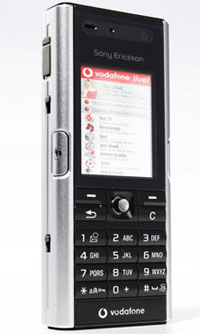 Rather immodestly self-declared as ‘beautifully designed’, Sony Ericsson and Vodafone have announced their new V600i 3G phone.
Rather immodestly self-declared as ‘beautifully designed’, Sony Ericsson and Vodafone have announced their new V600i 3G phone.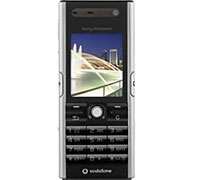 Subscribers can also take advantage of the content streamed from the Vodafone live! site, including live sports and music videos.
Subscribers can also take advantage of the content streamed from the Vodafone live! site, including live sports and music videos. Cutting edge office hipsters keen to perfect that
Cutting edge office hipsters keen to perfect that  NTL’s claim that 300K broadband offer was “more than 5 times faster than standard 56K dial-up internet” has been happy-slapped down by the Advertising Standards Authority (ASA), who condemned it as being in breach of TV Advertising Standards Code.
NTL’s claim that 300K broadband offer was “more than 5 times faster than standard 56K dial-up internet” has been happy-slapped down by the Advertising Standards Authority (ASA), who condemned it as being in breach of TV Advertising Standards Code. The telecoms giant insisted that it was standard industry practice to refer to the speed of broadband only in terms of download speed and, to back up their case, readily snitched on a host of competitors making similar claims.
The telecoms giant insisted that it was standard industry practice to refer to the speed of broadband only in terms of download speed and, to back up their case, readily snitched on a host of competitors making similar claims.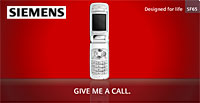 After an eternity of “will they? won’t they?” rumours Siemens has announced that it is to flog its loss-making mobile-phones unit to the Taiwan-based BenQ Group.
After an eternity of “will they? won’t they?” rumours Siemens has announced that it is to flog its loss-making mobile-phones unit to the Taiwan-based BenQ Group. Through the haze of a soft focus lens, Klaus Kleinfeld, the CEO of Siemens AG whispered sweet nothings about his new bedfellow:
Through the haze of a soft focus lens, Klaus Kleinfeld, the CEO of Siemens AG whispered sweet nothings about his new bedfellow: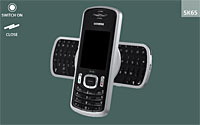 Perhaps a little tipsy from wielding his fearsome buying power, BenQ Chairman & CEO K.Y. Lee roared “With the acquisition of Siemens’s mobile phones business, we are rapidly approaching our goal to become one of the world’s leading players in the mobile phone industry. Our expansion strategy will be strongly supported by this deal, as we can rely on a global organization with excellent employees, a well-established blue-chip customer base in the mobile business and a strong brand with high impact.”
Perhaps a little tipsy from wielding his fearsome buying power, BenQ Chairman & CEO K.Y. Lee roared “With the acquisition of Siemens’s mobile phones business, we are rapidly approaching our goal to become one of the world’s leading players in the mobile phone industry. Our expansion strategy will be strongly supported by this deal, as we can rely on a global organization with excellent employees, a well-established blue-chip customer base in the mobile business and a strong brand with high impact.”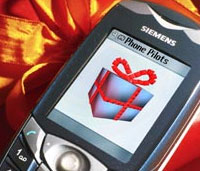 “Siemens will continue to offer its customers in the telecommunications industry one-stop shopping for all their needs. With BenQ, we have found a partner who will supply us with the corresponding products. In addition, we will be collaborating closely in research and development. Moreover, we also intend to utilize synergies in jointly addressing customers and in our selling operations,” commented Lothar Pauly, the CEO of the Siemens Communications Group.
“Siemens will continue to offer its customers in the telecommunications industry one-stop shopping for all their needs. With BenQ, we have found a partner who will supply us with the corresponding products. In addition, we will be collaborating closely in research and development. Moreover, we also intend to utilize synergies in jointly addressing customers and in our selling operations,” commented Lothar Pauly, the CEO of the Siemens Communications Group. America Online is taking on the likes of Yahoo, Hotmail and Google’s Gmail with its new free 2GB email service in the US, launched yesterday after trials earlier this year.
America Online is taking on the likes of Yahoo, Hotmail and Google’s Gmail with its new free 2GB email service in the US, launched yesterday after trials earlier this year.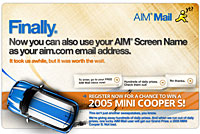 Users will be able to log in with their existing AOL IM screen name as their e-mail address, with an updated version of the AIM 5.9 software offering one-click access to AIM Mail.
Users will be able to log in with their existing AOL IM screen name as their e-mail address, with an updated version of the AIM 5.9 software offering one-click access to AIM Mail. The new free service represents a hefty shift in AOL’s business strategy which has traditional involved charging users subscription fees for its services. Instead, the company is expecting to generate revenue from AIM Mail through banner ads – hence the punter-tempting monster giveaway promotion.
The new free service represents a hefty shift in AOL’s business strategy which has traditional involved charging users subscription fees for its services. Instead, the company is expecting to generate revenue from AIM Mail through banner ads – hence the punter-tempting monster giveaway promotion. United and Verizon Airfone have become the first companies to receive Federal Aviation Administration (FAA) approval to install Wi-Fi for use on US domestic commercial aircraft.
United and Verizon Airfone have become the first companies to receive Federal Aviation Administration (FAA) approval to install Wi-Fi for use on US domestic commercial aircraft. Although the FAA approval currently only applies to the cabin of United’s B757-200 aircraft, it’s an important landmark on the way to enabling full high-speed wireless Internet access on board all United aircraft.
Although the FAA approval currently only applies to the cabin of United’s B757-200 aircraft, it’s an important landmark on the way to enabling full high-speed wireless Internet access on board all United aircraft. Once a service provider is selected by the FCC, United should be able to meet their passengers’ Wi-Fi needs in double quick time with, no doubt, zillions of other airlines following their lead.
Once a service provider is selected by the FCC, United should be able to meet their passengers’ Wi-Fi needs in double quick time with, no doubt, zillions of other airlines following their lead.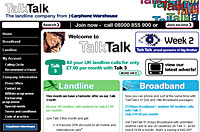 There’s a big battle going on for your landline, with the Carphone Warehouse limbering up to get in some telling punches into BT’s sector dominance.
There’s a big battle going on for your landline, with the Carphone Warehouse limbering up to get in some telling punches into BT’s sector dominance. Chief exec Charles Dunstone was ready with a quote: “We are now well on the way to developing a broad-based telecoms group, providing mobile and fixed line services to individuals and businesses across ten countries.”
Chief exec Charles Dunstone was ready with a quote: “We are now well on the way to developing a broad-based telecoms group, providing mobile and fixed line services to individuals and businesses across ten countries.” Crucially, revenues from telecoms services were up 45% to £804 million (~US$1,462m ~€1,190m), with operating profit flying up 50% to £22.5 million (~US$41m ~€33m).
Crucially, revenues from telecoms services were up 45% to £804 million (~US$1,462m ~€1,190m), with operating profit flying up 50% to £22.5 million (~US$41m ~€33m).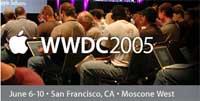 The rumours have been floating around the Internet for weeks, but it now seems certain that Apple will announce later today that it will be switching its computers to Intel’s.
The rumours have been floating around the Internet for weeks, but it now seems certain that Apple will announce later today that it will be switching its computers to Intel’s. When asked about the deal he said that the company has long pursued a deal with Apple, adding, “We always talk to Apple. Apple is a design win that we’ve coveted for 20 years and we continue to covet them as a design win. We will never give up on Apple.”
When asked about the deal he said that the company has long pursued a deal with Apple, adding, “We always talk to Apple. Apple is a design win that we’ve coveted for 20 years and we continue to covet them as a design win. We will never give up on Apple.” Sales of laptops outstripped the number of desktop PCs for the first time ever, according to Current Analysis.
Sales of laptops outstripped the number of desktop PCs for the first time ever, according to Current Analysis.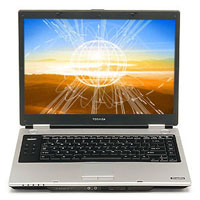 Once back-breaking beasts with a battery life measured in nano-seconds – and a price tag to make grown men weep – modern laptops are now faster, slimmer, more capable and, crucially, cheaper (laptop prices have fallen 17 per cent against a smaller 4 per cent fall for desktops).
Once back-breaking beasts with a battery life measured in nano-seconds – and a price tag to make grown men weep – modern laptops are now faster, slimmer, more capable and, crucially, cheaper (laptop prices have fallen 17 per cent against a smaller 4 per cent fall for desktops).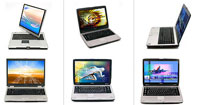 His barely-revelatory statement was backed up an announcement from Mike George, VP of consumer business for Dell US, who today revelaed that Dell will be launching a “luxury” range of computers, with their hoity-toity desktop and notebooks selling for between $1,200 (~£660, €979) and $3,500 (~£1,925, €2,855).
His barely-revelatory statement was backed up an announcement from Mike George, VP of consumer business for Dell US, who today revelaed that Dell will be launching a “luxury” range of computers, with their hoity-toity desktop and notebooks selling for between $1,200 (~£660, €979) and $3,500 (~£1,925, €2,855).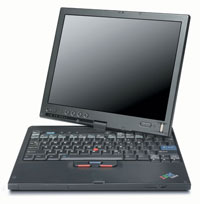 The Lenovo Group has officially announced the first ever ThinkPad tablet, the ThinkPad X41.
The Lenovo Group has officially announced the first ever ThinkPad tablet, the ThinkPad X41. The growth of Tablet PCs – once described as the future of mobile computing by Microsoft – has so far been slow, with total sales only representing a tiny fraction of the PC market.
The growth of Tablet PCs – once described as the future of mobile computing by Microsoft – has so far been slow, with total sales only representing a tiny fraction of the PC market.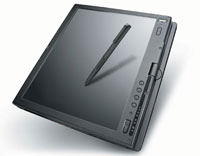 The anti-reflective and anti-glare screen claims to provide 170-degree viewing, and an optional integrated fingerprint reader offers extra security for the terminally paranoid and distrustful.
The anti-reflective and anti-glare screen claims to provide 170-degree viewing, and an optional integrated fingerprint reader offers extra security for the terminally paranoid and distrustful.